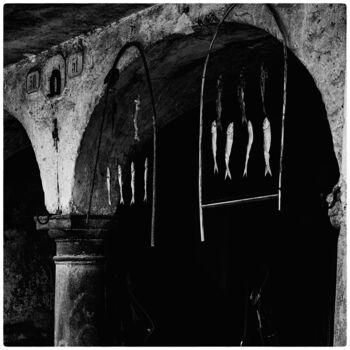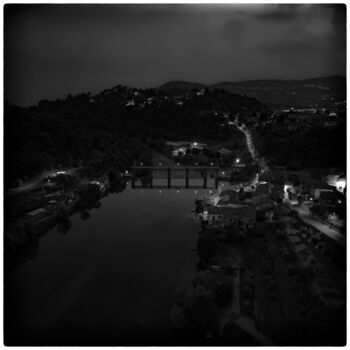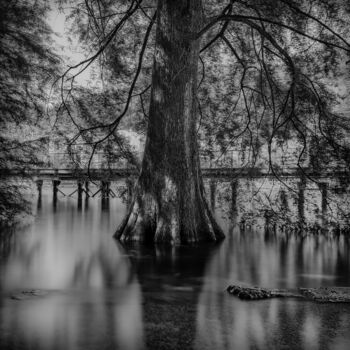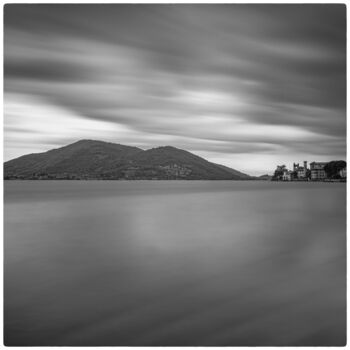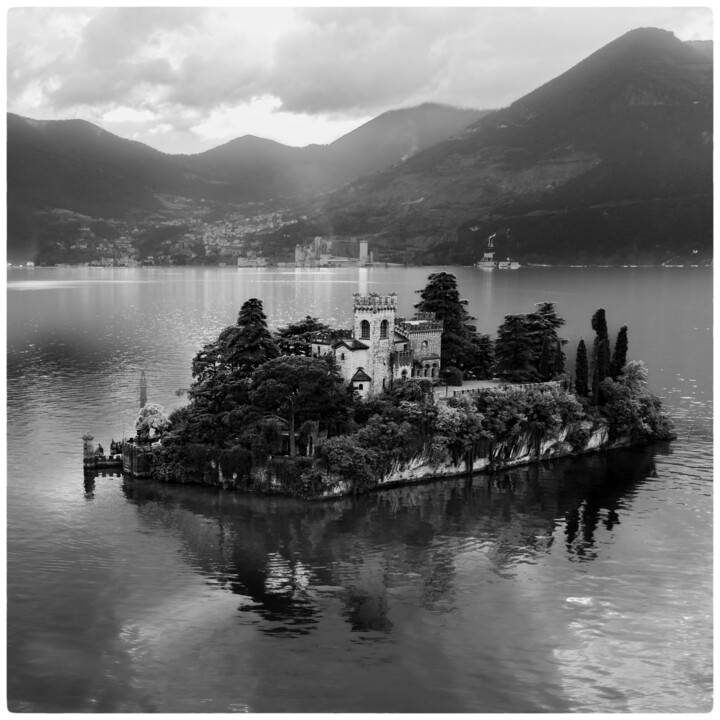


Let us know if you would like to see more photos of this artwork!
- Back of the work / Side of the work
- Details / Signature / Artwork's surface or texture
- Artwork in situation, Other...
Isola di loreto (2023) Photography by Graziano Alghisi
More info
- Packaging (Box or cardboard packaging) All artworks are shipped with a premium carrier, carefully protected and insured.
- Tracking Order tracking until the parcel is delivered to the buyer. A tracking number will be provided so that you can follow the parcel in real-time.
- Delay Worldwide delivery in 3 to 7 days (Estimate)
- Customs not included The price does not include customs fees. Most countries have no import tax for original artworks, but you may have to pay the reduced VAT. Customs fees (if any) are to be calculated on arrival by the customs office and will be billed separately by the carrier.
More info
- Trackable Online Certificate of Authenticity Authenticity Certificates can be verified online at any moment by scanning the artwork code.
- Artist Value Certification Experts study the work and career of an artist then establish an independent and reliable average price value. The average price value situates the artist on a price range for a given period. The experts may also be asked to establish a more precise estimate for a particular work.
More info
100% secure payment with SSL certificate + 3D Secure.
More info
-
Limited Edition (#1/10)
Photography,
Digital Photography
on Paper
- Dimensions Height 11.8in, Width 11.8in
- Artwork's condition The artwork is in perfect condition
- Framing This artwork is not framed
- Categories Photographs under $500 Landscape
presentation
65, 186, 251.
No, they're not going crazy. The sequence of figures present here is not random, but represents, respectively, the surface, altitude and depth of one of the most evocative lakes in Italy.
Affectionately called Lac d'Izé or Sebìn by the Lombards, Lake Iseo is a body of water teeming with life, a place of encounters, experiences and opportunities.
Therefore, defining it in a few words would be reductive, if not downright offensive, also considering the thousand-year history it carries on its shoulders.
Furthermore, Lac d'Izé has its origins in very ancient times, when glaciers reigned over a large part of the Earth. And it is precisely to them that Sebino owes its origins.
It was actually the ice that carved out a home for him among the rocks of the Prealps, a serpentine-shaped basin, sinuous and thin, with the exception of its central part: there, in fact, an enlargement hosts three islands, Monte Isola, Loreto and San Paolo , capable of interposing themselves in the water as suspension points.
From its birth onwards, year after year, the lake has always been there, wedged between what are now the provinces of Bergamo and Brescia, a silent witness to a thousand events. Important pages of history have intertwined in its vicinity and over the centuries the Serbino has attracted many peoples, it has attracted people from the east and the west, from the north as well as the south.
The first evidence of man dates back to the Paleolithic, while we have to wait until the Iron Age to see unequivocal signs of the presence of the Camuni in the area. They, however, were not the only ones to populate these territories.
Even the Etruscans reached under the Alps and had the opportunity to get to know the Sebino, as did the Romans after them. Furthermore, after the fall of the Roman Empire the Lombards arrived from the east, while Charlemagne appeared from the west. And again Frederick Barbarossa as well as the Republic of Venice took root around the shores of the lake. Not to mention a whole succession of conflicts, from the bitter disputes between Guelphs and Ghibellines to battles for the unification of Italy, which affected the region.
Fortunately, conflicts represent only a small part of the events that have affected the area.
Thanks to its beauty, and perhaps its strategic position, a bridge between mountains and plains, over the centuries Lake Iseo has also been able to capture the interest of men of art and science. From
painters such as Romanino to Francesco Hayez, from Antonio Canova to Leonardo da Vinci, many have stopped in these parts during their lives, not to mention native visitors from much more distant lands, who have enjoyed long stays on the shores of Lake Serbino. This is the case, for example, of Friedrich Chopin.
The great composer spent years along the banks of the Sebino and, although some attribute his stay to the writer Amantine Dupin, the lake also undoubtedly influenced the choice. Almost like the "enchantress Circe" of the situation, the Lac d'Izé bewitched the musician, kept him close to her, inspiring him to compose sonatas and nocturnes; furthermore, who knows how many times the discreet and silent waters of the lake have cradled his thoughts and were the soundtrack of his stormy love story...
The beauty and tranquility of the place, therefore, are undeniable. Furthermore, different climates and landscapes, sometimes almost antithetical, which coexist along the shores of the lake, giving dynamism, creating a unique combination in the world, also contribute to making it so special.
The variety of animal species that populate the woods and fields in the surrounding area is immense while underwater trout, eels, perch and many others ripple the surface with their fins as they swim. Even the plant kingdom is no exception: olive trees and vines, fruit trees, firs, larches and chestnut groves live together around the same place. It seems paradoxical but, by closing your eyes in the middle of the woods, in some moments you might even be able to smell the scent of Franciacorta.
Even today there is life and movement around there and, although after the unification of our country the lake has no longer been the backdrop to particularly famous battles, two kingdoms, the animal and the vegetal, have been fighting tirelessly, and for who knows how long, one next to each other to carve out a space suitable for them.
If only men fought with the same tenacity...
While plants and animals, despite the difficulties, want to remain near the lake, the same cannot be said about the people who live near it. It is as if human beings had given up in the face of the multiple challenges that living in such a fascinating, but at the same time fragile, territory entails. These are not simple suppositions, the data confirms it: in fact, there is a galloping demographic decline strongly influenced by a massive depopulation of the areas surrounding the lake, and unfortunately there is no trend reversal on the horizon. On some occasions one might even think that the local inhabitants are no longer able to see the beauty and all the potential of the area in which they were born and raised.
Added to this is a bitter observation: the devaluation of the lake by those who live in the area is not the only threat, on the contrary. Indifference and lack of consideration often go hand in hand with mistreatment, abuse, crazy projects that aim to completely disfigure the landscape as well as making the lives of those still fighting to preserve the lake even more difficult.
Concrete columns as tall as fir trees, satellite dishes that touch the sky, neglect, excavations that undermine the stability of the ground and deforestation are just some of the crimes committed against the pre-Alpine lake. In addition to this, the lesser notoriety of the Serbino compared to nearby lakes, which are better known and frequented, contributes to making it vulnerable, represents a limit in its protection and, consequently, risks undermining its delicate balance.
Therefore, committing to protect the lake against environmental disasters, natural or man-made, is not enough. There is a second, but equally important challenge to face: giving visibility to an already vulnerable lake which otherwise risks being put aside, if not forgotten.
Hence the idea of giving voice to this natural beauty, of highlighting for better or worse what Lake Iseo is and of awakening our consciences as much as possible. After all, as one of Francisco Goya's best-known works reports, "the sleep of reason generates monsters" (and in our case also building monsters).
The project
Once the decision was made to address the issue as completely as possible, the first question to be resolved was how to achieve this goal. Photography turned out to be the most sensible answer.
They say that a photograph is worth a thousand words and many of them have been collected here. Moreover, the topics to be covered would have been far too numerous and complex and not even an expert pen could do them justice.
Speaking of expert pens, the great writer Isabel Allende comes to our aid. She herself admitted and recognized the greatness of photography, stating how a beautiful photograph was more powerful than written pages and pages, also explaining the reason: according to Allende, in fact, photography is able to tell stories, reveal places, events and states of life. 'heart. According to her words, simple images are not imprinted in a photograph, and you can't blame her.
Looking at some images it is possible to hear the water crashing on the rock, the noise of the boats, the whistle of the wind between the trees. The photographs can even smell: some have the typical lake smell of a body of water, others the sweet scent of Alpine herbs, still others smell of everyday life, of food, but also of concrete. More effective than many turns of phrase, images bring ineffable sensations to our touch.
Therefore, photography could only be the best tool to fully describe the Lach d'Izé.
After that, once the reasons and the most suitable art form to describe the Sebino were clarified, the next step was to prepare an action plan, understanding what the best strategy was to implement and carry forward the project.
After various reflections, in the end the choice fell on black and white. A controversial choice, it is undeniable, but necessary.
Certainly in the eyes of many, giving up all the shades of color offered by the lake and the surrounding landscape might seem like a gamble, if not downright madness. Yet, there is a reason. After all, to put it like Jean Baudrillard, "color de-dramatizes, black and white is more charged with the senses."
More than a simple provocation, choosing to use black and white was in some respects a challenge. All things considered, however, giving up color proved to be the best decision to better convey the meaning of this story through images.
Without colour, what remains of the lake is its authentic beauty, without frills, without distractions, without other details being able to distract attention from the subjects immortalized, from the emotional charge of an episode captured by the camera, from the ultimate meaning of a image.
Once the primacy of color has been removed, what remains is the dichotomy par excellence, the contrast between black and white, between two forces opposed to each other and sometimes almost irreconcilable.
Indicators of light and darkness, of totality and complete absence, these two colors (or non-colours) also have a strong symbolic charge since, in some ways, they reflect man's relationship with Lake Iseo. A relationship, the one in its current state, fluctuating, made up of ups and downs, in which we move from a certain indifference to extreme exploitation, well beyond its possibilities. Yet, as you can see by paying more attention, a thousand shades of gray pass between black and white, in these photographs as in life.
The foundation on which the entire project rests is that anyone who browses this gallery of images does not limit themselves to admiring the beauty of nature or becoming indignant when faced with less idyllic scenes.
The hope on which the whole project is rooted is that each person can see, in the gray scale of each shot, nuances, inspirations, intuitions in order to do justice to this all-Italian jewel, gem and treasure chest at the same time, to rediscover it , to preserve it, to learn day after day to love it authentically.
Related themes
Graziano Alghisi, artist photographer, was born in 1980 in the province of Brescia, Italy. From an early age, he was interested in music and remained in this universe until the age of thirty.
The world of photography has always fascinated him, but he never considered it seriously. He then decided to challenge himself by taking courses and studying the great masters of photography. Thus, he manages to express, through photographic language, what he wishes to communicate.
With his art, he seeks to freeze time, to capture a unique and ephemeral moment, because once the photo is taken, it has already passed and will never return.
He lives in a small town on the plain of Brescia, between Lake Iseo, the Oglio river, the hills of Franciacorta and the low plain where, in some places, time seems to have stood still for a long time.
-
Nationality:
ITALY

- Date of birth : 1980
- Artistic domains: Works by artists with a certified artist value,
- Groups: Certified Artists Contemporary Italian Artists




